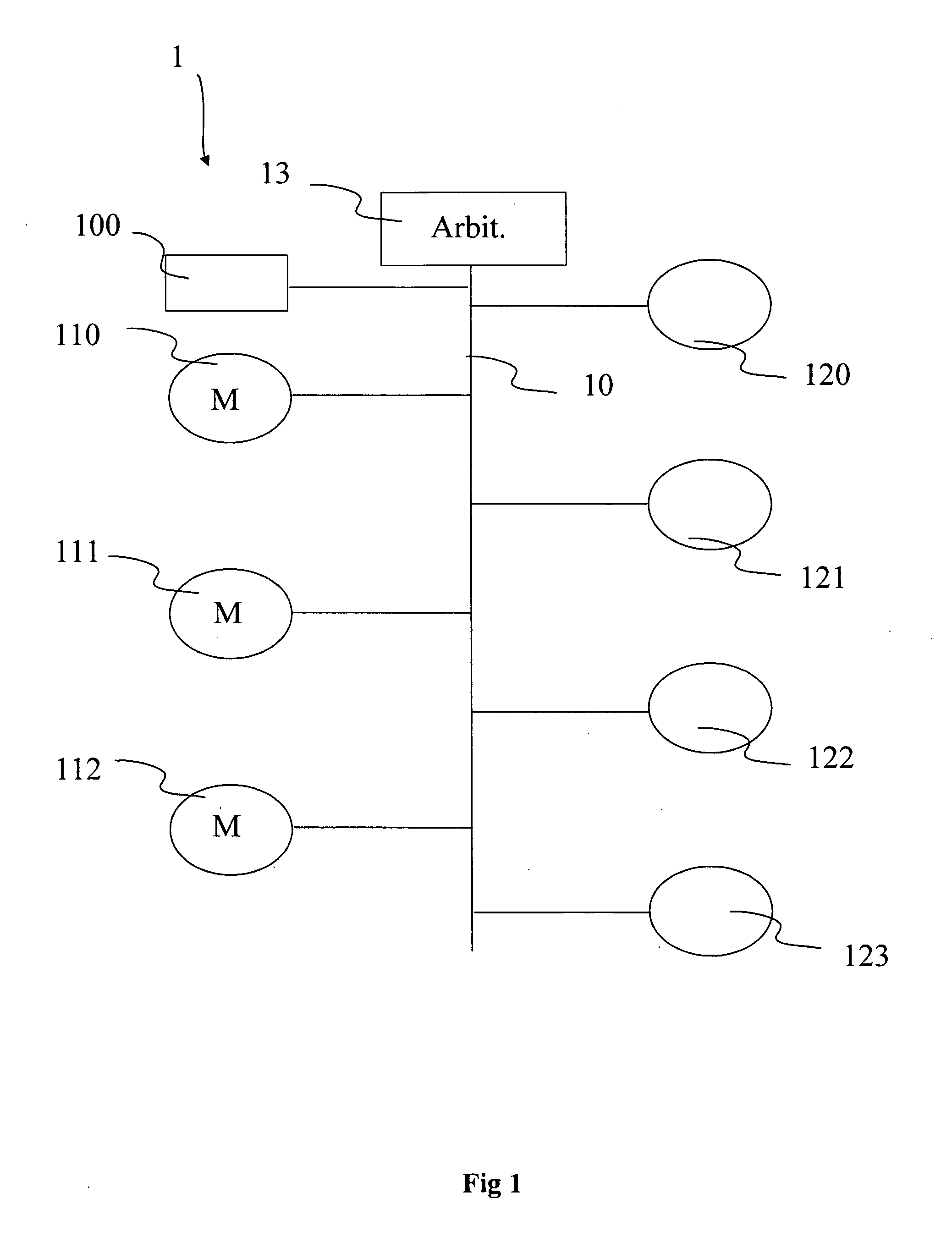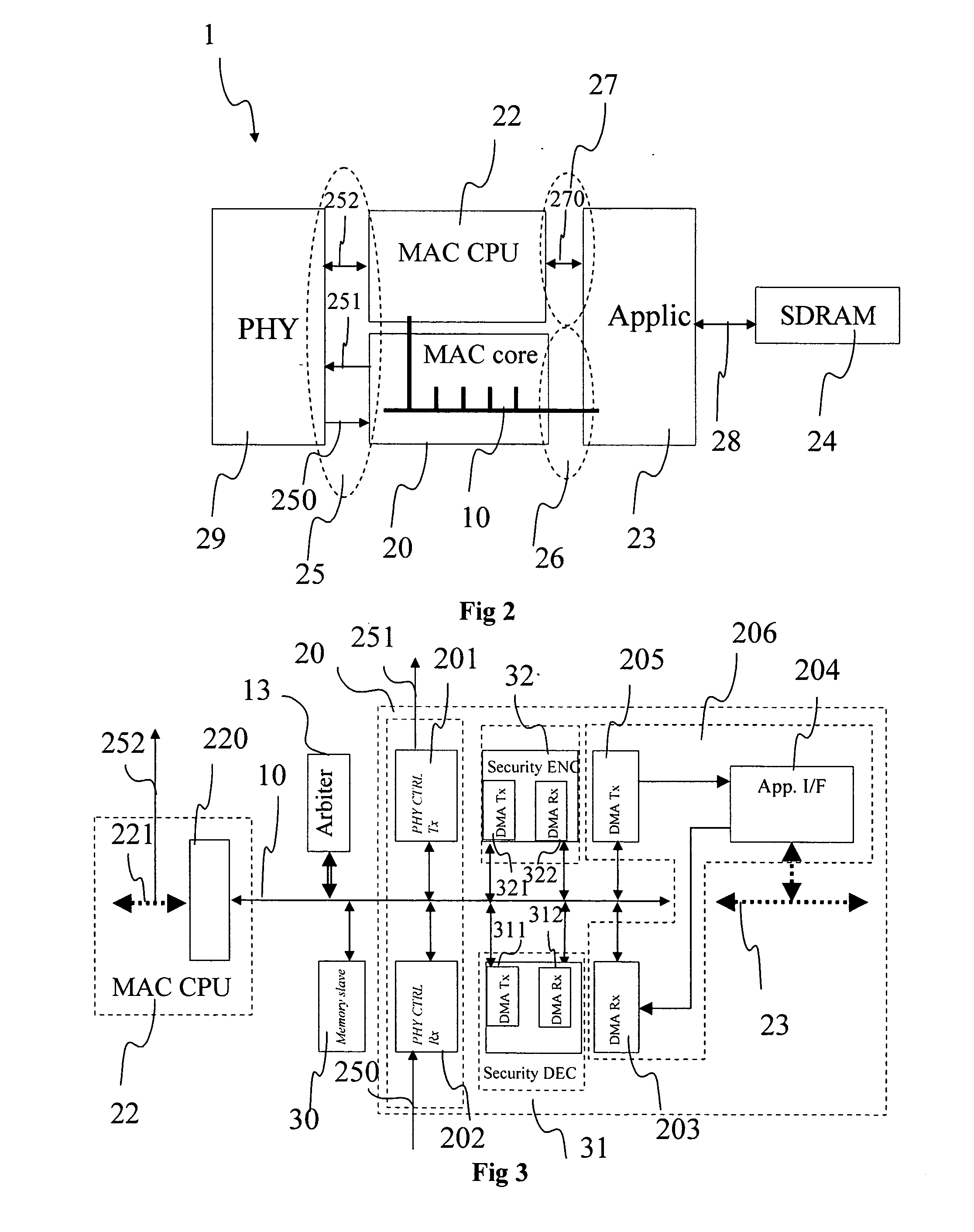Method for Accessing a Data Transmission Bus, Corresponding Device and System
a data transmission and bus technology, applied in the direction of electric digital data processing, instruments, etc., can solve the problems of not being able to guarantee the transmission bandwidth and latency of each master, the bus is not adapted to low level communication, and the partitioning between software and hardware resources is not easy to achieve. achieve the effect of minimising bit rate and/or maximum latency
- Summary
- Abstract
- Description
- Claims
- Application Information
AI Technical Summary
Benefits of technology
Problems solved by technology
Method used
Image
Examples
Embodiment Construction
[0048]FIG. 1 diagrammatically presents a communication system 1 according to a particular embodiment of the invention.
[0049]The system 1 comprises:[0050]a bus 10,[0051]an arbiter 13 managing the accesses to the bus 10,[0052]a principle master peripheral device 100 having the highest priority to access the bus 10,[0053]secondary master peripheral devices 110 to 112 connected to the bus 10, and[0054]slaves 120 to 123.
[0055]The masters 110 to 112 are suited to initiate data transfers in read and / or write mode on the bus. They have a lower priority than the principal master 100 to access the bus. Advantageously, the number of masters is unlimited and can take any value (for example 3, 10 or 100). The greater the number of masters, the more access authorizations the bus must be best managed, the time and the transmission bandwidth allocated to each of the masters being lower on average. The invention notably enables a fluidity in the accesses when the number of masters is high.
[0056]The ...
PUM
 Login to View More
Login to View More Abstract
Description
Claims
Application Information
 Login to View More
Login to View More - R&D
- Intellectual Property
- Life Sciences
- Materials
- Tech Scout
- Unparalleled Data Quality
- Higher Quality Content
- 60% Fewer Hallucinations
Browse by: Latest US Patents, China's latest patents, Technical Efficacy Thesaurus, Application Domain, Technology Topic, Popular Technical Reports.
© 2025 PatSnap. All rights reserved.Legal|Privacy policy|Modern Slavery Act Transparency Statement|Sitemap|About US| Contact US: help@patsnap.com



